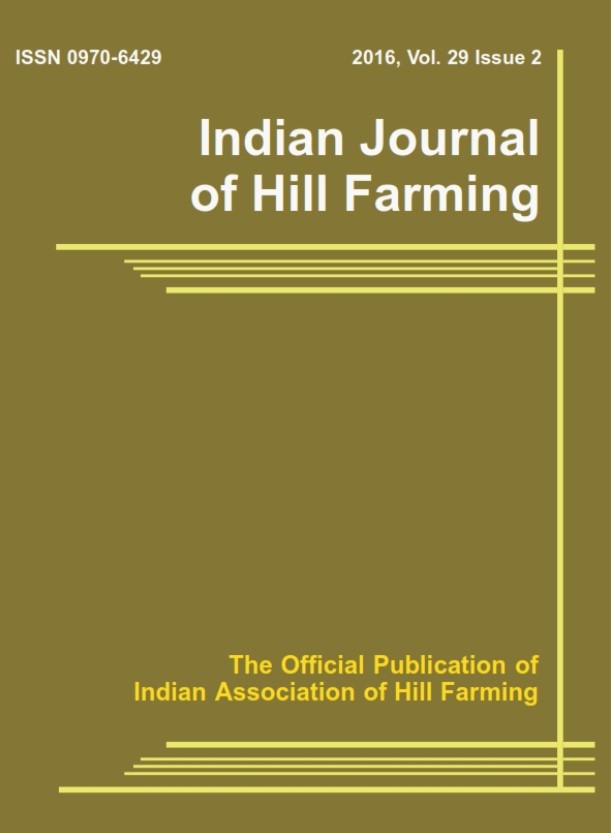Pest Complex of Cultivated Oyster Mushroom in Northeast India: Feeding Losses and Role of Micro-climate in Pest Multiplication
DOI:
https://doi.org/10.56678/Keywords:
Mycetophagus insect, Pleasing fungus beetle, Sciarid fly, Rove beetle, CollembolaAbstract
The northeast India is one of the most promising regions for the cultivation of mushroom;
where oyster mushroom is a widely accepted and popular food among the local people.
Despite higher demand, the year-round production of oyster mushroom is usually not
possible, which is mainly due to severe damage by the insect pests and diseases, especially
during rainy season. We studied the detailed pest complex of oyster mushroom, their
damage pattern and the role of micro-climatic factors on pest multiplication during 2013
and 2014. Various arthropod pests viz., pleasing fungus beetles (Triplax spp., Scaphisoma
spp. and Megalodacne spp.) sciarid fly (Bradysia spp.), mycetophilid fly (Allactoneura
spp.), fruit fly (Drosophila spp.), rove beetles, noctuid moths, collembolans and mites
(Tyrophagus spp.) were found infesting oyster mushroom in different months of the year.
Pest incidence was found upto 100% during the rainy season (May, June, July and
August). Among all, Triplax spp. and Bradysia spp. were found to be the most destructive
pests of oyster mushroom; which were present throughout the year and in turn were
responsible for reduction in the marketable yield. A significant positive correlation was
observed between the population of beetle, Triplax spp. and maximum temperature
(r=0.430), minimum temperature (r=0.425) and relative humidity (r=0.352). A significant
positive correlation was also found between populations of sciarid fly and maximum
temperature (r=0. 541) as well as relative humidity (r=0. 371). This is a first
comprehensive study of its kind, where the detailed pest complex of oyster mushroom in
northeast India, their damage pattern and population dynamics throughout the year has
been documented. Mushroom being a perishable edible food, this study would have
immense importance for understanding the mushroom pest complex further for designing
of effective management strategies against the major pests.
Downloads
Published
Issue
Section
License

This work is licensed under a Creative Commons Attribution-NonCommercial-NoDerivatives 4.0 International License.




